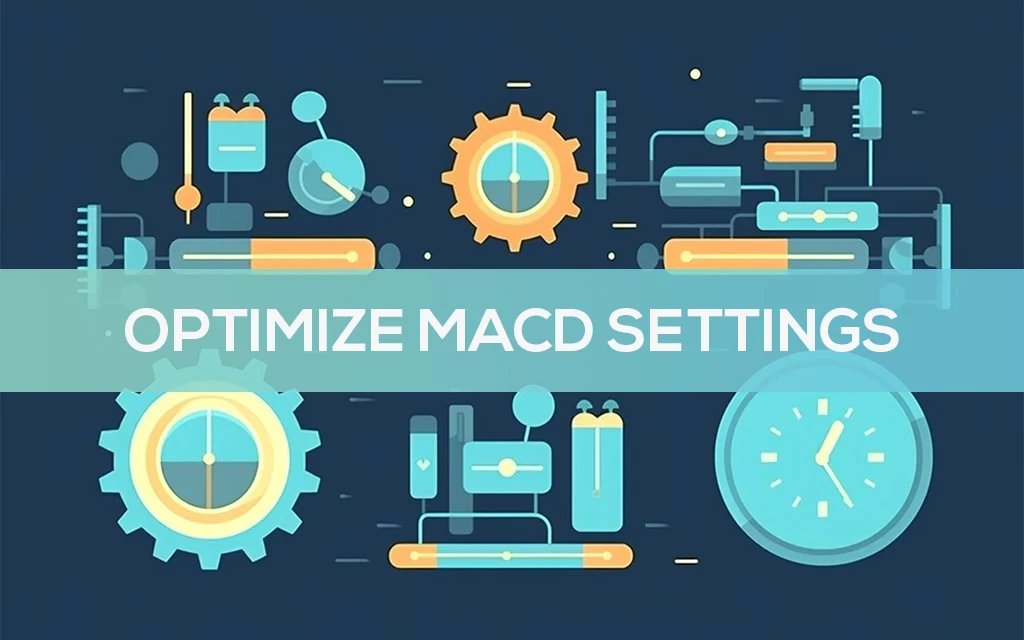Navigating the volatile world of cryptocurrencies can feel like a high-wire act, but with the right tools, you can walk the line like a seasoned pro. How to use crypto charting tools isn’t just about pulling up graphs; it’s about unlocking a treasure trove of market insights that can give you an edge. Whether you’re a beginner or have been trading for years, understanding chart indicators and patterns is crucial to making informed decisions. My journey through the depths of crypto technical analysis has shown that anyone can master this game with patience and practice. So let’s dive in and turn those jagged lines into a roadmap for success.
Understanding the Foundations of Crypto Technical Analysis
Getting Started with Crypto Technical Analysis Basics
To make crypto trading decisions, we must understand charts well. Crypto charts show price moves over time. They help us predict where prices could go next. Let’s dive into crypto technical analysis basics.
First, you must grasp reading candlestick patterns in crypto. These patterns show buying and selling action. Every candle has four main parts: the open, close, high, and low. Green candles mean prices went up, and red candles mean they went down.
Next, learn the crypto chart indicators. These tools, like MACD and RSI, help us see market trends. MACD shows if buyers or sellers control the market. RSI tells us if crypto is overbought or oversold.
You also want to look at trading volume in crypto. It shows how much crypto is bought or sold. High volume means lots of interest, which can move prices.
Remember to spot trend lines in cryptocurrency charts. Draw a straight line connecting price highs or lows. If the line slopes up, it means an uptrend. If it slopes down, we’re in a downtrend.
Grasping the Significance of Support and Resistance Levels in Crypto
Support and resistance levels in crypto are like invisible barriers. They stop the price from moving in a certain direction. Support levels are like safety nets. They hold the price from falling further. Resistance levels are like ceilings. They keep prices from climbing too high.
If a price passes these levels, it could mean a big move is coming. If a price moves past resistance, it could keep going up. If it dips below support, it might drop more.
In summary, support and resistance are key in predicting price moves. They help traders decide when to buy or sell. They can also tell us how strong a trend might be. Understanding these levels is a must for any crypto trader.
Mastering Crypto Chart Indicators and Patterns
Utilizing MACD and RSI for Advanced Crypto Trading Insights
Let’s dive deep into using MACD and RSI, two mighty tools that help you make smart moves in crypto. Think of MACD as your crypto heartbeat monitor. It shows you the pulse of the market. MACD lines crossing tell you if the market’s heart beats faster or slows down. When MACD goes above its signal line, the market could be heating up – time to buy, maybe? And when it dips below, it might be cooling off – perhaps sell?
RSI is like your market energy gauge. It tells you if a coin is tired from too much buying (overbought) or ready to run after lots of selling (oversold). A high RSI, usually over 70, means maybe it’s time to chill and see if the market will take a breath. A low RSI, under 30, and it could be time to join the race.
Deciphering Crypto Chart Patterns for Predictive Analysis
Reading chart patterns is like being a weather forecaster for crypto. You can predict sunny gains or stormy drops. Patterns have cool names like “head and shoulders” or “double bottom.” A head and shoulders pattern might mean prices will drop soon, so watch out. Double bottom? It’s like the market saying, “I’ve fallen, but I’m getting up,” signaling a potential climb.
Price channels help you see the path coins are bouncing between. When they break these paths, it’s exciting. It might mean a major price change is coming, so look sharp!
Let’s talk candlesticks – the building blocks of crypto charts. Each one tells a small story of the day’s trading: opening price, closing price, highs, and lows. A candlestick with a long lower “wick” and a short upper body means buyers won over sellers, pushing the price up. If you get good at reading these, you could catch the next price move.
Remember, chart indicators and patterns are tools, not crystal balls. They help you think about possible futures, not see them for sure. Always combine them with other info like news and market mood. Happy charting!
Advanced Techniques in Crypto Chart Analysis
Applying Fibonacci Retracement and Ichimoku Cloud to Crypto Trends
Crypto charts can look like a wild maze. But with the right tools, you crack the code. Let’s dive into two game-changers: Fibonacci retracement and Ichimoku Cloud. First, Fibonacci retracement, a tool that can spot a ‘bounce-back’ zone in price movements. You draw these lines at peak and trough points. They show where prices may pause or reverse. It’s like finding hidden stairs in market trends.
The Ichimoku Cloud is next level. Picture it as a weather forecast for crypto. It gives a quick view of market momentum and potential support or resistance zones. When the price is above the Cloud, it’s all sunshine for buyers. Below the Cloud, it’s shady, and sellers may have their day. The Cloud has multiple lines, which display different things. But focus on two: the ‘turning’ line and ‘standard’ line. Cross these, and you might spot a trend flip.
These tools do more than show lines on a graph. They unlock a story within the chaos.
Strategic Use of Bollinger Bands and Moving Averages for Crypto Traders
Now, let’s tackle Bollinger Bands and Moving Averages. Think of Bollinger Bands as rubber bands. They stretch and squeeze with price moves. The wider the bands, the wilder the market. A tight squeeze? The market’s quiet, but watch out—big moves often follow.
Moving Averages smooth out price data. Picture a flowing river over jagged rocks. They show where the market’s headed over a set time. When short-term averages cross long-term ones, traders get excited. This could mean a change in the wind.
To make these tools sing, here’s a hot tip: check them out when the market’s confused. If prices are bouncing inside Bollinger Bands or near key moving averages, get ready. Smart traders jump in when they see these signs.
As you master these tools, remember: patience is key. Hasty moves can cost you. Use these techniques to spot the waves in the market ocean. With practice, you’ll surf them like a pro.
Optimizing Your Crypto Charting Setup
The Importance of Configuring Crypto Chart Timeframes and Software
When you trade crypto, how you set up your charts matters a lot. Imagine you are driving. You need clear maps to reach your goal. In trading, charts are your maps. You need to see things clearly to make good moves. Using the best software helps you do just that.
Let’s talk time frames first. They are like the zoom on a camera. Choose short ones for quick trades, like scalping. Pick longer ones for a big picture, like swing trading. It’s key to match the time frame with your trading style for top results.
Now, let’s dive into the software part. A good tool is easy to use and has lots of features. It will show you prices and patterns fast and clear. Go for software that many traders trust. It should give you a leg up in trading. Change settings to suit how you trade. This way, you get charts that make sense to you.
Using the right time frames and software means you see trends better. This helps you make smarter, faster choices. Imagine you see a chance to buy low or sell high earlier than others. It can mean big wins for you in the busy crypto market.
Analyzing Cryptocurrency Pair Correlations and Harnessing Volatility Measures
Next up is pairing coins and understanding how they move together or apart. If two coins often move the same way, they are linked, or ‘correlated’. Knowing this helps you spread your risk. Say one goes down; the other might too. So, you can plan to not lose too much.
Some coins are like wild horses. They can jump high or drop fast. This is ‘volatility’. High volatility means big risks but also big chance for gain. Measure it to know when to trade safe or go big. Use tools like Bollinger Bands to see how wild a coin can get.
Look, trading crypto is not easy, but with the right chart setup, you can do much better. It’s like having the best gear for a sport. The better it fits you, the better you play. So, take time to tune your charts. Use the tools that suit your game. And always keep an eye on how coins move together and how wild they can be.
In summary, good chart setup is about using the right time frames and software. It’s also about knowing how coins relate and how brave you should be in trading them. These are the keys to unlock market secrets. They turn numbers and lines into smart moves that can help you win in the world of crypto trading. Remember, a trader with the best maps often finds the best treasures. Happy charting!
We’ve covered key parts of crypto technical analysis in this post. Starting with the basics, we looked at support and resistance levels that show where the price might halt or reverse. Then we dived into chart indicators like MACD and RSI, plus pattern reading for better trade choices. We also talked about sophisticated techniques like using Fibonacci lines and Ichimoku Cloud to read market trends, as well as how Bollinger Bands and moving averages can sharpen your trading.
At last, setting up your charts right matters a lot. Choose the right timeframes and tools. Keep an eye on how different crypto pairs move together and use volatility to your benefit.
These tools and tips can help you make smart moves in crypto trading. Keep learning, and use what you’ve learned to stay ahead in the game. Happy trading!
Q&A :
How do Crypto Charting Tools Enhance Trading Strategies?
Charting tools are indispensable for crypto traders as they provide visual aids to analyze market trends, track price movements, and plan trades. They often include technical indicators and drawing tools which help traders identify patterns and significant levels of support and resistance. By using these tools effectively, traders can make informed decisions and refine their trading strategies for better outcomes.
What Are the Key Features to Look for in Crypto Charting Tools?
When selecting a crypto charting tool, some of the essential features include a variety of chart types (such as line, bar, and candlestick charts), a comprehensive set of technical analysis indicators (like moving averages, RSI, and Bollinger Bands), and customization options to tailor the interface according to the trader’s preferences. Additionally, real-time data, intuitive design, and the ability to trade directly from the chart are also highly beneficial.
Can Beginners Easily Learn to Use Crypto Charting Tools?
Yes, beginners can learn to use crypto charting tools, although it might require some time and practice. Many charting tools offer tutorials, user guides, and customer support to help new users get acquainted with the platform. Starting with basic chart types and a limited set of indicators can make the learning process more manageable. As beginners become more comfortable, they can gradually explore advanced features and complex technical analysis techniques.
How Do I Interpret Cryptocurrency Price Movements with Charting Tools?
To interpret cryptocurrency price movements using charting tools, traders often look for patterns like triangles, head and shoulders, or flags that might indicate future price action. They can also use indicators such as volume, MACD, or moving averages to corroborate the patterns observed in the charts. Recognizing these signals and understanding market sentiment can help predict potential price changes.
What Is the Best Way to Practice Using Crypto Charting Tools Before Trading?
The best way to practice using crypto charting tools before actual trading is to utilize demo accounts or paper trading features offered by many platforms. This allows users to simulate trading strategies using real market data without any financial risk. Engaging with community forums, learning from experienced traders, and constantly analyzing past trades for improvement are also effective ways to gain proficiency in using charting tools.





